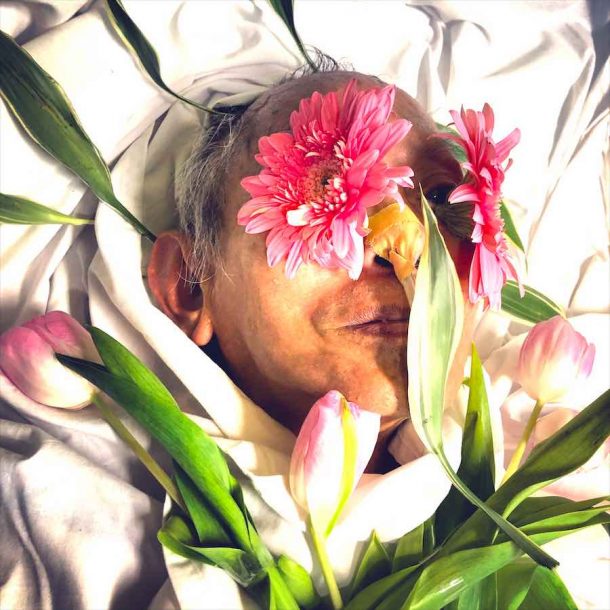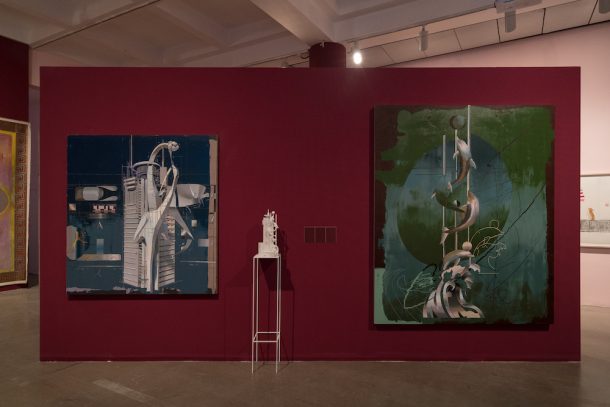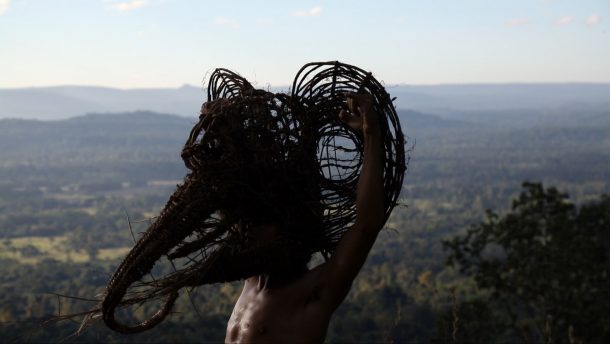Beastly: An Opera for Animals at Rockbund Shanghai
| July 5, 2019

In The Wild One, a witness to Marlon Brando’s rebellious character asks him what he’s rebelling against. “What do you got?” he shoots back. There is a wide diversity of practices—from video to sculpture to painting, from Asia and Europe and North America, with a wide variety of concern—in the encyclopedic show of contemporary art practices showcased now at Rockbund, but what seems to unify them is a simmering dissatisfaction with the world as it is. In this cacophonous opera, voices from all over the spectrum are heard, in mourning and in anger; the natural world seems to erupt into the space of the museum, as indigenous practices from across Asia and the world are systematized into art objects, many of which seem to lament the demise of human ecologies as well as natural ones. Here, we see the traditions which are dying, the species going extinct, the lovers and friends who aren’t able to speak to us anymore, as in Adam Nankervis’s Sirens, a document of his husband David Medalla, mute after a stroke but with his mouth filled with flowers. The malaise of our present is a post-colonial one, but also an ecological one: in Simon Soon’s powerful The Tyger and the Navigator, colonial explorers and the forces of a nature taking vengeance become archetypes for a universal sort of conflict, almost a new sort of history: between the controllers and the controlled, between those who organize information for the ends of financial and political benefit, and those who are organized.

Ink jet on Murakumo Kozo paper, 80 × 60 cm
Courtesy the artist and another vacant space

There are powerful ironies in this, not least the fact that the museum is a key space of cultural capital, and the fact that the show’s co-organizers in Hong Kong and Shanghai both, in different ways, inhabit post-colonial spaces that continue to be contested. While some of the themes of the show have been seen elsewhere, notably in Anselm Franke’s HKW show “Animism”—shown in Shenzhen in 2013, Chinese cities are a special sort of space for ecological and post-colonial explorations; China seems like the key site of 21st century ecological crisis and the potential solution to that crisis, and is dialectically both post-colonial and post-imperial, while maintaining elements of a culturally colonized space (particularly in the art world—directors of both Para Site and Rockbund are of European nationality) as well as articulating a new sort of hegemony, a fact which won’t have escaped Hong Kong curators and artists. Chinese modernity, and that of Shanghai particularly, falls into the category that art historian Boris Groys calls “anti-modern modernity,” in the sense that rather than being a site in which modernism emerged organically, it is a former colony itself, with a particular form of melancholy; hometown artist Cui Jie’s paintings are a familiar friend for Shanghai locals in the show. Shanghai (and Hong Kong), once colonies, now spread their indigenous form of universality across China, Asia and the world, not uncontroversially; while we may enjoy the virtuous feeling of critique, those of us in the so-called art world are undoubtedly involved in what Debord called “recuperation,” the comprehension and reorganization of lived experience and living beings on the part of an organizing force such as capital. Robert Zhao Renhui’s Pejantan, to name one of many ecologically oriented works in the show, explores the 21st century heart of darkness; no longer in empire or colonialism as such, but in our rapacious exploitation of natural resources and transformation of the environment into so many raw materials for our bleak trajectory of world domination (elsewhere, Lawrence Lek’s video work examines what this might look like). Khvay Samnang’s wooden masks of animals with accompanying video work make the analogy complete: indigenous cultures, and the ecologies which are their natural habitat, are under threat by the apocalypse “development.” On the fourth floor, Chitra Ganesh’s invocations of Tibetan Buddhist imagery are arresting and intriguing, although with such a feast of images unfolding around us, it is easy to feel overwhelmed and surrender to the colorful logic of the images themselves, without trying to read them for the political significance that many of them clearly wish to claim.

Acrylic, glitter, collage and digital print on paper
99.06 × 134.62 cm
Courtesy the artist

Installation of 11 sculptures (woven vine, bamboo and steel), 2-channel HD video, color and sound; dimensions variable; 18 min 43 sec
Commissioned by documenta 14
Choreographer and dancer: Nget Rady
As one of the show’s co-curators Billy Tang stated, “Each artist [explores] the struggle between an indigenous form of collective performance… against the homogenizing culture or form of power… animals have been used in various ways… as proxies to talk about the actions and behavior of human beings.” The present and future of Shanghai, Hong Kong, and Chinese modernity more generally are in question, overshadowed by the sense that our opera buffa is turning into a more turgid, Wagnerian Götterdämmerung, in which all animals, plants and humans will whirl into conflict before falling silent. But in the space of art—traditionally the place where we look for answers when we can’t find them anywhere else—vivid life and hopes may still be cultivated.

